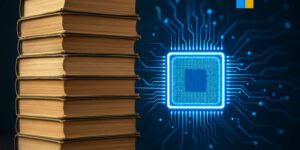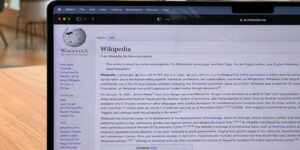Israeli Researchers Use Cosmic Waves to Uncover Hidden Ancient Formations and Artifacts Beneath Temple Mount
A team of Tel Aviv University physicists and archaeologists succeeded in jamming a large device into an underground cavern outside of the Old City of Jerusalem in 2023.
With the help of ropes and pulleys, the researchers lowered the large device—made up of layers of metal components linked together by tangled wires, tubes, ribbons and clamps—into the cavern.
It was probably the last thing that anyone would expect to find in such a place, as it resembled a time machine that had been deposited 3,000 years ago.
It might as well have been.
The muon detector was used to discover secret passageways that led to the city’s main water source in ancient times and to accomplish the task without having to lift a shovel.
As Prof. Oded Lipschits, director of Ancient Israel Studies at the university explained: “All ancient cities needed a water supply and fortified, secret ways to get to there in case of emergency or war.”
Lipschits is one of four coordinators of a project to map the tunnels, chambers and canals underneath Jerusalem.
The muon device was developed by a team of archaeologists at Tel Aviv University and was designed to capture and register the angular distribution of muons, tiny yet powerful subatomic particles that are created when cosmic rays smash into the earth’s atmosphere. Muons are similar to electrons but are much heavier and often exhibit wave-like properties due to their quantum nature.
Breaking News. Spirit-Filled Stories. Subscribe to Charisma on YouTube now!
Using particle physics to examine underground areas that are covered by multiple layers of ancient settlements—and which are also of significance to various religions—is a very daunting if not impossible task.
Prof. Lipschits refers to the method as muon radiography and believes the technique could shed light on what life was like in Jerusalem thousands of years ago by identifying and visualizing underground structures and artifacts that are not visible to the naked eye or traditional archaeological methods
It can also be used to reveal fortifications from very early times, as well as tombs and spaces that might have been carved out to help the city’s early residents continue to have access to water during enemy sieges.
The university researchers noted that this method will allow them to virtually leave no stone unturned, as it does not disturb people or buildings above ground.
One project coordinator, Prof. Erez Etzion, from the School of Physics and Astronomy, said: “It is our dream to scan underground in a search for tunnels that might lead us to the Temple Mount. The muon detectors can provide us with tools to search underground passively.”
One of the large muon detection devices has been positioned near the Gihon Spring, while a second device is being installed at the ‘Stone Stepped Structure,’ a large wall in the City of David dating back approximately 3,000 years. The site lies halfway between the Gihon Spring and the Temple Mount, marking the lowest point on the eastern slope of the City of David. In addition, it includes the Silwan neighborhood, positioned to the south of the Temple Mount, in an area that archaeologists deem as the oldest section of Jerusalem with direct ties to biblical times.
The researchers intend to point the muon detectors toward the Temple Mount in the hope that they can detect tunnels or other underground spaces running between the area that cannot be excavated toward the spring.
“As a historian, I believe it’s important to understand our history,” and points out “The City of David is the most important site for all three of the world’s monotheistic religions,” said Prof. Lipschits.
Because muon particles travel nearly at the speed of light—and are almost unstoppable, as they can penetrate just about anything, including solid rock—the detector must be placed below the target area and angled correctly to analyze the rate of muons passing through whatever is being studied.
Prof. Etzion explained the significance of the detector’s placement.
“As the muons are coming from the sky, you need to place the detector in a spot that is lower than the screened region, to see if there is any deviation in the ground between that detector and the surface.”
“If the detector receives more muons than expected, it means that, for at least part of their underground journey, the particles didn’t travel through matter but through an empty cavity.”
Archaeologists suspect that many tunnels were dug from the Temple Mount to the Gihon Spring, the main source of water, allowing water to be accessed during times of siege.
Tel Aviv University archaeologist, Prof. Yuval Gadot said many parts of ancient Jerusalem are unexplored archaeologically, including the Temple Mount, which is revered by Muslims as the Haram al-Sharif (the Noble Sanctuary), as well as the City of David, most of which is now covered by the modern-day Palestinian village of Silwan and has, itself, become a flashpoint in the Israeli-Palestinian conflict.
“Underground passages and tunnels were a cardinal component in Jerusalem’s political life and so far we have explored the spaces located by the spring, but there are many more tunnels that were exploited by the ancient elites of Jerusalem for all sorts of reasons,” said Gadot.
“There are questions, for example, as to whether and how the Temple Mount and the Ophel, the area between the City of David and the southern edge of the Temple Mount, which is rich in monumental remains from the First Temple Period, were connected to the Gihon in order to supply those areas with water. Muons could reveal secret passages connecting those spots,” Gadot said.
“These unknown spaces that might have been used in order to connect the city’s different quarters lie beyond our reach,” he added. “Getting to know them will change our understanding of how the city evolved and functioned.”
The initiative is not without its challenges. For example, archaeological digs in and around the Silwn neighborhood remain a frequent source of tension, especially now, as those tensions are being fueled by the Ir David Foundation, the right-wing NGO that runs the City of David archaeological park and supports Jewish settlement in the area.
As muon imaging research in Jerusalem is still in its infancy, Etzion and Gadot said their current project, with single detectors placed in different locations, will only return a flat, 2-D image of any void that is between them and the surface.
The researchers believe an array of some 50 detectors at different locations would be more effective in triangulating the data and creating a reliable 3D map of the underground. However, with the cost of a muon detector at $100,000 a piece, the scientific archaeological project has its challenges and it remains to be seen whether enough funding can be secured to do so.{eoa}
This article originally appeared on ALL ISRAEL NEWS, and is reposted with permission.
The All Israel News Staff is a team of journalists in Israel.
Join Charisma Magazine Online to follow everything the Holy Spirit is doing around the world!




























































